Moderate muscle cooling induced by single and intermittent/prolonged cold-water immersions differently affects muscle contractile function in young males
- PMID: 37025384
- PMCID: PMC10070757
- DOI: 10.3389/fphys.2023.1172817
Moderate muscle cooling induced by single and intermittent/prolonged cold-water immersions differently affects muscle contractile function in young males
Abstract
Background: We investigated the impact of moderate muscle cooling induced by single and intermittent/prolonged cold-water immersions (CWI) on muscle force and contractility in unfatigued state and during the development of fatigue resulting from electrically induced contractions. Methods: Twelve young males participated in this study consisting of two phases [single phase (SP) followed by intermittent/prolonged phase (IPP)], with both phases including two conditions (i.e., four trials in total) performed randomly: control passive sitting (CON) and cold-water immersions (10°C). SP-CWI included one 45 min-bath (from 15 to 60 min). IPP-CWI included three baths (45 min-bath from 15 to 60 min, and 15 min-baths from 165 to 180 min and from 255 to 270 min), with participants sitting at room temperature the rest of the time until 300 min. Blood pressure and intramuscular (Tmu) temperature were assessed, and neuromuscular testing was performed at baseline and 60 min after baseline during SP, and at baseline, 60, 90, 150 and 300 min after baseline during IPP. A fatiguing protocol (100 electrical stimulations) was performed after the last neuromuscular testing of each trial. Results: In unfatigued state, SP-CWI and IPP-CWI reduced electrically induced torque at 100 Hz (P100) but not at 20 Hz (P20), and increased P20/P100 ratio. The changes from baseline for P100 and P20/P100 ratio were lower in IPP-CWI than SP-CWI. Both cold-water immersion conditions slowed down muscle contraction and relaxation, and reduced maximal isokinetic contraction torque, but the changes from baseline were lower after IPP-CWI than SP-CWI. cold-water immersions did not impair maximal voluntary isometric contraction. During the fatiguing protocol, torque fatigue index and the changes in muscle contractile properties were larger after IPP-CWI than SP-CWI, but were in the same range as after CON conditions. The differences of muscle contractile function between SP-CWI and IPP-CWI were accompanied by a lower reduction of superficial Tmu and a smaller increase in systolic blood pressure after IPP-CWI than SP-CWI. Conclusion: IPP-CWI induces a less pronounced fast-to-slow contractile transition compared to SP-CWI, and this may result from the reduced vasoconstriction response and enhanced blood perfusion of the superficial muscle vessels, which could ultimately limit the reduction of superficial Tmu.
Keywords: cold exposure; cold habituation; cold-water immersion; muscle contractility; muscle fatigue; muscle force; temperature.
Copyright © 2023 Treigyte, Eimantas, Venckunas, Brazaitis and Chaillou.
Conflict of interest statement
The authors declare that the research was conducted in the absence of any commercial or financial relationships that could be construed as a potential conflict of interest.
Figures

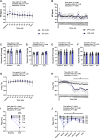
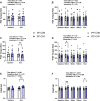
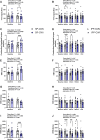
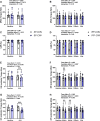
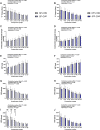
Similar articles
-
Passive heating-induced changes in muscle contractile function are not further augmented by prolonged exposure in young males experiencing moderate thermal stress.Front Physiol. 2024 Feb 27;15:1356488. doi: 10.3389/fphys.2024.1356488. eCollection 2024. Front Physiol. 2024. PMID: 38476145 Free PMC article.
-
Cold Water Immersion Does Not Enhance Recovery and Performance After High-Intensity Interval Dorsiflexion Exercise.Scand J Med Sci Sports. 2025 May;35(5):e70061. doi: 10.1111/sms.70061. Scand J Med Sci Sports. 2025. PMID: 40318171 Free PMC article. Clinical Trial.
-
Effect of cold water immersion after exercise in the heat on muscle function, body temperatures, and vessel diameter.J Sci Med Sport. 2009 Jan;12(1):91-6. doi: 10.1016/j.jsams.2007.10.011. Epub 2008 Feb 20. J Sci Med Sport. 2009. PMID: 18083634
-
What Parameters Influence the Effect of Cold-Water Immersion on Muscle Soreness? An Updated Systematic Review and Meta-Analysis.Clin J Sport Med. 2023 Jan 1;33(1):13-25. doi: 10.1097/JSM.0000000000001081. Epub 2022 Nov 11. Clin J Sport Med. 2023. PMID: 36399666
-
Optimizing Cold-Water Immersion for Exercise-Induced Hyperthermia: An Evidence-Based Paper.J Athl Train. 2016 Jun 2;51(6):500-1. doi: 10.4085/1062-6050-51.9.04. Epub 2016 Jul 21. J Athl Train. 2016. PMID: 27441949 Free PMC article. Review.
Cited by
-
Three-week sprint interval training (SIT) reduces cell-free DNA and low-frequency fatigue but does not induce VO2max improvement in older men.Eur J Appl Physiol. 2024 Apr;124(4):1297-1309. doi: 10.1007/s00421-023-05366-2. Epub 2023 Nov 28. Eur J Appl Physiol. 2024. PMID: 38015284
-
Passive heating-induced changes in muscle contractile function are not further augmented by prolonged exposure in young males experiencing moderate thermal stress.Front Physiol. 2024 Feb 27;15:1356488. doi: 10.3389/fphys.2024.1356488. eCollection 2024. Front Physiol. 2024. PMID: 38476145 Free PMC article.
References
LinkOut - more resources
Full Text Sources

